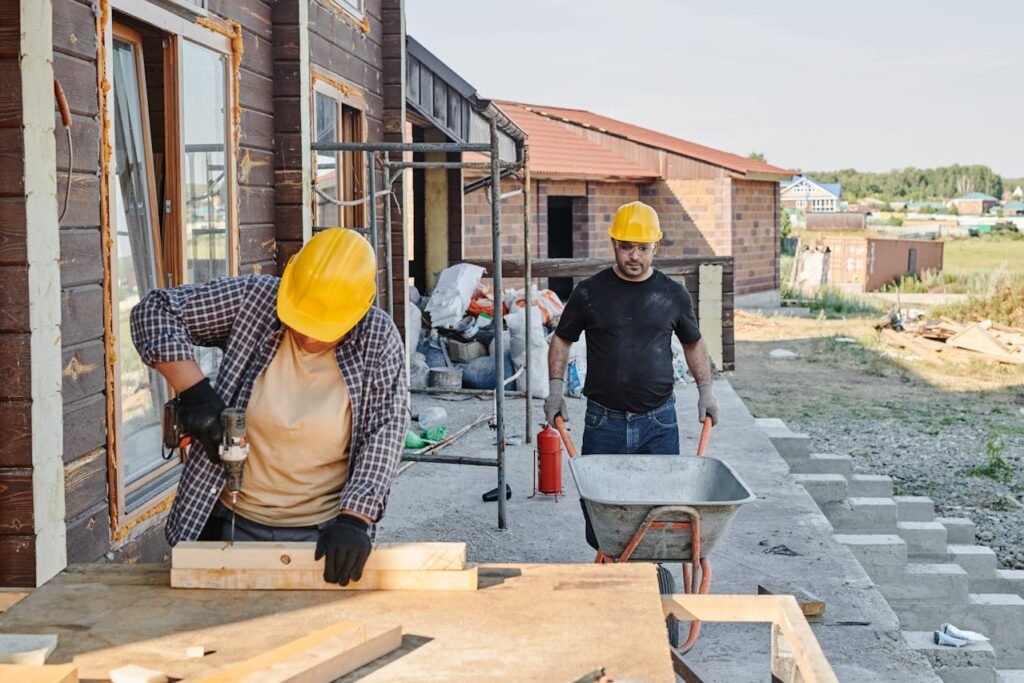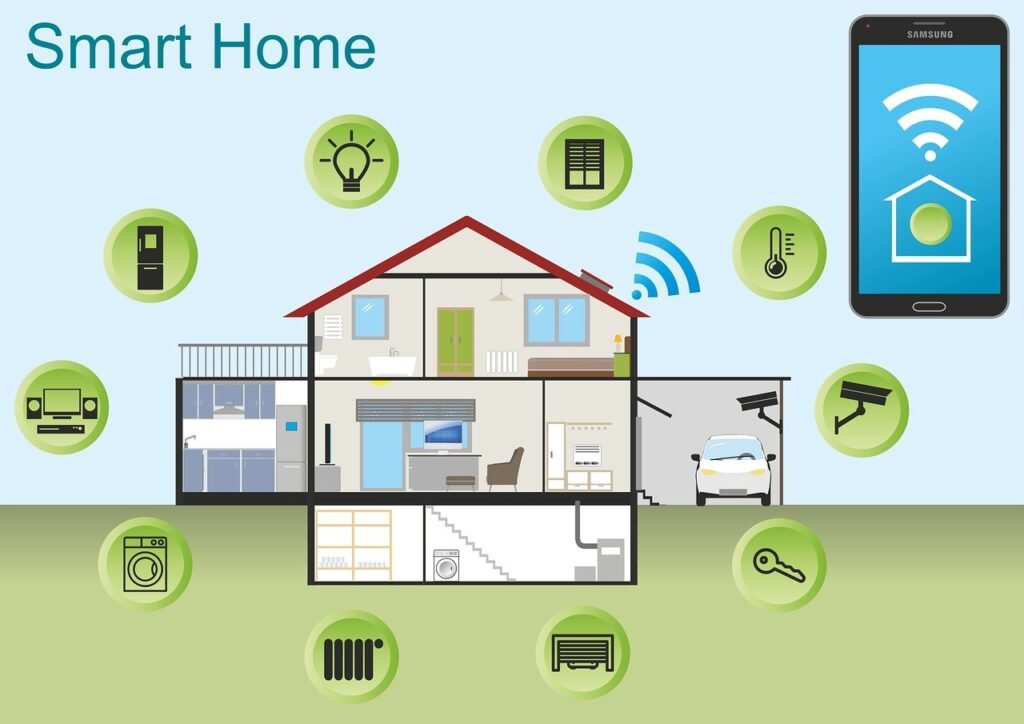Imagine a future where your home powers itself, your office breathes cleaner air than the outdoors, and every building around you adapts in real-time to save energy, conserve water, and reduce waste—all while enhancing your comfort and health. This isn’t science fiction—it’s the vision behind sustainable building practices that are transforming how we design, construct, and live in our built environment.
Globally, buildings consume around 30% of final energy and account for over half of electricity demand, according to the International Energy Agency. However, with climate change intensifying and resources becoming scarcer, the construction sector has found itself at a crossroads. The solution? A shift toward smarter, greener, and more efficient buildings that reduce environmental impact while boosting resilience, savings, and livability.
In this comprehensive guide, we will look into the seven essential pillars of sustainable building—from energy efficiency and renewable integration to smart technologies and waste reduction—offering real-world strategies, expert insights, and compelling examples that reveal how today’s buildings can become engines of sustainability.

1. Energy Efficiency and Renewable Energy Integration
Buildings account for a substantial portion of global energy consumption. According to the International Energy Agency (IEA), buildings consume about 30% of global final energy and more than half of global electricity demand. This highlights the importance of integrating energy efficiency and renewable energy solutions into building design and operation.
Why Energy Efficiency Matters
Improving energy efficiency in buildings is crucial for reducing environmental impact and operational costs. By using less energy for heating, cooling, lighting, and other functions, we can lower greenhouse gas emissions and save money on energy bills.
Practical Techniques for Energy Efficiency
Here are some effective strategies to enhance energy efficiency in buildings:
- High-Performance Insulation: Proper insulation reduces heat flow, maintaining indoor temperatures and reducing the need for heating and cooling. This not only saves energy but also improves comfort.
- Energy-Efficient Windows: Installing double or triple-glazed windows minimizes heat loss in winter and heat gain in summer, contributing to energy savings.
- Smart HVAC Systems: Modern heating, ventilation, and air conditioning systems with smart controls optimize energy use by adjusting settings based on occupancy and weather conditions.
- LED Lighting: Replacing incandescent bulbs with ENERGY STAR-rated LED lights can reduce energy consumption by at least 75% and last up to 25 times longer.
Integrating Renewable Energy
Incorporating renewable energy sources into buildings further enhances sustainability:
- Solar Panels: Installing photovoltaic (PV) systems on rooftops can generate electricity on-site, reducing reliance on the grid.
- Battery Storage: Combining solar panels with battery storage systems allows for energy use during peak hours or outages, increasing self-sufficiency.
- Geothermal Heating and Cooling: Utilizing the stable temperatures underground, geothermal systems provide efficient heating and cooling solutions.
The Importance of Building Envelope Efficiency
Before adding renewable energy systems, it’s essential to ensure the building envelope—walls, roof, windows, and doors—is energy efficient. As Amory Lovins, co-founder of the Rocky Mountain Institute, aptly said, “Investing in building envelope efficiency before adding renewables is like fixing a leaky bucket before filling it.”
Financial Incentives and Support
Various programs and incentives are available to support energy efficiency and renewable energy projects:
- Federal Tax Credits: According to ENERGY STAR, homeowners can claim up to $3,200 annually for energy-efficient upgrades, including insulation, windows, and HVAC systems.
- State Rebates: Many states offer rebates for installing energy-efficient equipment and renewable energy systems.
- Inflation Reduction Act: This act provides substantial funding for energy efficiency improvements and renewable energy adoption in homes, according to the U.S. Department of Energy.

2. Sustainable Materials and Resource Efficiency
Construction is a major contributor to global waste. In the U.S. alone, over 600 million tons of construction and demolition debris were generated in 2018, more than twice the amount of municipal solid waste, according to the Environmental Protection Agency (EPA). This staggering figure underscores the urgent need for sustainable building practices. By choosing recycled, renewable, or sustainably sourced materials, we can significantly reduce waste and emissions, leading to a healthier planet and more efficient resource use.
Key Practices
- Bamboo Flooring: Bamboo is a rapidly renewable resource, reaching maturity in just 3-5 years. Its durability and aesthetic appeal make it an excellent alternative to traditional hardwood flooring. Using bamboo reduces deforestation and promotes sustainable forestry practices.
- Recycled Steel Framing: Steel is one of the most recycled materials in the world. Recycled steel framing not only reduces the demand for virgin materials but also minimizes construction waste. Structures built with recycled steel are durable, resilient, and support a closed-loop system that maximizes efficiency.
- Low-VOC Paints: Volatile Organic Compounds (VOCs) in traditional paints can release harmful chemicals into the air, affecting indoor air quality and posing health risks. Low-VOC paints emit fewer pollutants, creating a safer environment for occupants and reducing environmental impact.
- Reclaimed Wood and Bricks: According to studies, reusing materials like wood and bricks from demolished structures conserves resources and adds unique character to new buildings. This practice reduces landfill waste and the environmental costs associated with producing new materials.
Expert Insight: “Waste is just a resource in the wrong place.”
— Dr. Anna Dyson, Yale Center for Ecosystems + Architecture
Learn More: Are Micro Homes Eco-Friendly
3. Water Efficiency and Conservation Systems
Water is life, yet it’s astonishing how little of it is readily available for our use. Only about 2.5% of Earth’s water is freshwater, and a significant portion of that is locked away in glaciers or deep underground aquifers. This means that the water we depend on for drinking, agriculture, and sanitation is an incredibly limited resource. With climate change intensifying droughts and altering precipitation patterns, the strain on our freshwater supplies is becoming more pronounced.
When it comes to construction and urban development, integrating water-efficient systems isn’t just an environmental consideration—it’s a necessity. Green buildings that prioritize water conservation not only reduce their ecological footprint but also offer long-term cost savings and resilience against water scarcity.
Common Water Efficiency Systems
Rainwater Harvesting
Collecting rainwater from rooftops and storing it for non-potable uses like irrigation, toilet flushing, or laundry can significantly reduce reliance on municipal water supplies. This practice not only conserves water but also mitigates stormwater runoff, reducing the risk of urban flooding and water pollution.
Greywater Recycling
Greywater is lightly used water from sources such as showers, bathroom sinks, and laundry machines. Rather than sending this water directly to the sewer, greywater systems can treat and reuse it for non-potable applications like irrigating outdoor landscapes or flushing toilets. Research conducted in Central California on dozens of residential systems found that households were able to significantly reduce their daily water usage by an average of 17 gallons per person. Over a year, this equates to more than 14,000 gallons saved per household. The study also reported high user satisfaction and minimal maintenance issues, indicating the effectiveness and reliability of such systems.
Low-Flow Fixtures
Modern low-flow faucets, showerheads, and toilets are designed to use significantly less water without compromising performance. For instance, newer bathroom faucets typically restrict flow rates to between 0.5 and 1.5 gallons per minute, compared to older models that might use up to 2.2 gallons per minute.
Xeriscaping
Xeriscaping involves landscaping with drought-resistant native plants that require minimal irrigation. By reducing the need for supplemental watering, xeriscaping not only conserves water but also creates low-maintenance and sustainable green spaces.
Case Study: Residential Greywater System Payback
| Item | Cost | Water Savings (Annual) | Payback Period |
|---|---|---|---|
| Greywater recycling system | $3,500 | 25,000 gallons | 4.5 years |
Implementing water-efficient systems in buildings is more than an eco-friendly choice; it’s a strategic investment in sustainability and resilience. As water scarcity becomes an increasingly pressing issue, integrating these systems into our homes and communities is essential for a sustainable future.
4. Indoor Environmental Quality (IEQ)
According to the EPA, people typically spend around 90% of their time inside buildings. This means the quality of our indoor environments has a significant impact on our health and well-being. Poor air quality, inadequate lighting, and exposure to toxic materials can lead to discomfort and serious health issues.
Best Practices for Enhancing IEQ
- Natural Ventilation: Allowing fresh outdoor air to circulate indoors helps dilute indoor pollutants. This can be achieved by opening windows and using ventilation systems that bring in outside air.
- Daylighting Strategies: Maximizing natural light through the use of windows, skylights, and reflective surfaces reduces the need for artificial lighting and has been linked to improved mood and productivity.
- Low-Emitting Materials: Using building materials and furnishings that emit low levels of volatile organic compounds (VOCs) helps maintain better indoor air quality.
- Biophilic Design Elements: According to a study published in Sustainability, incorporating natural elements like plants, natural materials, and views of nature into indoor spaces can enhance air quality and promote well-being.
Expert Insight
Joseph Allen, a professor at the Harvard T.H. Chan School of Public Health, emphasizes the importance of healthy buildings:
“A healthy building is just as important as a healthy diet or exercise.”
He advocates for designing and operating buildings in ways that reduce disease burden and enhance overall well-being
5. Sustainable Site Development
The location and design of a building’s site influence more than just its curb appeal. They affect how people get there, how water flows around it, the local wildlife, and even the temperature of the surrounding area. Thoughtful site development can reduce the need for cars, manage stormwater naturally, support local ecosystems, and combat the urban heat island effect—a phenomenon where cities become significantly warmer than nearby rural areas due to human activities and infrastructure.
Common Techniques
Building on Brownfields Instead of Greenfields
Brownfields are previously developed lands, often former industrial or commercial sites, that may be contaminated but have potential for redevelopment. By choosing to build on brownfields, we can revitalize areas without encroaching on undeveloped natural spaces, preserving greenfields for agriculture, recreation, or wildlife. This approach not only conserves land but also helps in cleaning up and repurposing neglected areas.
Stormwater Management Ponds
Traditional urban development often leads to increased runoff, which can overwhelm sewer systems and pollute waterways. Stormwater management ponds are designed to collect and treat runoff, allowing sediments and pollutants to settle before the water is slowly released or absorbed. These ponds can also become habitats for local wildlife, adding ecological value to urban areas.
Native Vegetation Landscaping
Landscaping with native plants—those that naturally occur in a region—offers numerous benefits. Native plants are adapted to local climate and soil conditions, requiring less water, fertilizer, and maintenance. They provide habitat for local wildlife, including pollinators like bees and butterflies, and contribute to the area’s biodiversity.
Green Roofs
Green roofs involve covering rooftops with vegetation, which can provide insulation, reduce stormwater runoff, and mitigate the urban heat island effect. According EPA, green roofs can lower rooftop temperatures by up to 56°F compared to conventional roofs, and reduce nearby air temperatures by up to 20°F. They also extend the lifespan of roofing materials by protecting them from the elements.
Real-World Example: Cooling a Hot City
In Chicago, the Nancy and G. Timothy Johnson Center at North Park University features a green roof that has made a noticeable difference. The green roof helps reduce noise, cools the building, and improves air flow. Students and staff have reported a more comfortable environment, especially during the city’s hot summers.
Chicago’s City Hall also boasts a green roof that covers over 20,000 square feet. Studies have shown that this green roof can be up to 40°F cooler than neighboring conventional roofs during peak summer heat, leading to significant energy savings and a more pleasant urban environment.

6. Waste Reduction During Construction and Beyond
Construction is a resource-intensive industry, and unfortunately, it generates an enormous amount of waste. In Europe, the European Environment Agency (EEA) reported that construction and demolition (C&D) waste is the largest waste stream, posing major challenges for sustainability and circular economy goals. This staggering figure underscores the critical need for effective waste reduction strategies in the construction sector.
Practices That Make a Difference
Reducing waste in construction isn’t just about being environmentally conscious; it’s also about improving efficiency and cutting costs. Here are some practical approaches that have proven effective:
On-Site Recycling Bins
Implementing designated recycling bins on construction sites encourages workers to sort materials like concrete, wood, metals, and plastics at the source. This practice not only facilitates recycling but also prevents contamination, making the recycling process more efficient.
Pre-Fabrication of Components
Prefabrication involves manufacturing building components off-site in a controlled environment. This method allows for precise measurements and reduces material waste. Studies have shown that prefabrication can lead to significant waste reduction compared to traditional construction methods.
Modular Construction
Modular construction advances traditional prefabrication by assembling substantial portions of a building in a controlled, off-site environment. This method not only helps reduce material waste but also enhances energy efficiency during the construction phase. A recent study using Building Information Modeling and decision-making tools found that modular techniques can significantly lower energy consumption compared to conventional building methods.
Deconstruction Instead of Demolition
Traditional demolition often results in materials being sent to landfills. Deconstruction, on the other hand, involves carefully dismantling buildings to salvage components for reuse and recycling. This practice maximizes material recovery and conserves resources.
Learn More: Sustainable Innovations in the Construction of Tiny Homes
7. Smart Building Technologies and Data-Driven Design
Traditional buildings often operate on fixed schedules and manual controls, leading to inefficiencies and increased operational costs. Smart buildings, however, utilize interconnected systems and real-time data to adapt to changing conditions, ensuring optimal performance. This adaptability not only conserves resources but also enhances occupant comfort and safety.
Key Examples of Smart Technologies
Automated Lighting and HVAC Systems
Smart lighting and HVAC (Heating, Ventilation, and Air Conditioning) systems adjust based on occupancy and environmental conditions. For instance, lights can dim or turn off in unoccupied rooms, and HVAC systems can modulate temperatures based on real-time occupancy data. Such automation can lead to significant energy savings. According to a 2024 study published in the journal Buildings, integrating Internet of Things (IoT) technologies into smart buildings can reduce energy consumption by up to 30%.
Real-Time Energy Monitoring
Implementing real-time energy monitoring allows facility managers to track energy consumption patterns, identify inefficiencies, and make informed decisions. It provides continuous analysis of energy usage across various systems, ensuring that energy is utilized only when necessary.
Occupancy Sensors
Occupancy sensors detect the presence of individuals in specific areas, enabling systems to adjust lighting, HVAC, and other operations accordingly. These sensors, which can utilize technologies like Passive Infrared (PIR) and ultrasonic detection, help reduce energy waste by ensuring systems operate only when needed. According to a study published in Energy and Buildings, integrating high-resolution occupancy sensors with LED lighting systems in office environments can lead to energy savings of up to 79%, especially when combined with daylight harvesting strategies.
AI-Driven Predictive Maintenance
Artificial Intelligence (AI) plays a crucial role in predictive maintenance by analyzing data from various building systems to foresee potential equipment failures. This proactive approach minimizes downtime and extends the lifespan of equipment. For example, AI-driven maintenance strategies can reduce HVAC energy consumption by approximately 15.8%, as demonstrated in a case study at 45 Broadway in Manhattan.
Real-World Impact
The integration of smart technologies in buildings has tangible benefits. For instance, Keppel Bay Tower in Singapore underwent a transformation to become the country’s first zero-energy commercial building. Upgrades included smart lighting systems, efficient water management, and intelligent air intake controls, resulting in a 30% reduction in energy usage.

Conclusion: Building a Greener Future, One Choice at a Time
Green building is a series of choices. Some are big, like installing solar panels. Others are small, like choosing low-VOC paint. But they all matter.
The late architect and visionary William McDonough said it best:
“Design is the first signal of human intention.”
What intentions are you signaling with your designs?
Actionable Steps to Start Today
- Audit your current or planned projects for energy leaks.
- Commit to using at least 30% recycled content materials.
- Incorporate rainwater harvesting where possible.
- Prioritize good ventilation and natural light.
- Design for flexibility and adaptability to reduce future waste.
- Educate clients and stakeholders on the long-term ROI of green practices







